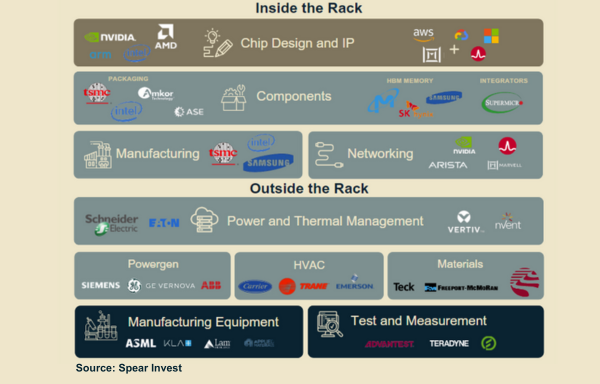Project Stargate: America’s Boldest AI Investment Yet
In a historic move that could redefine the AI landscape, President Donald Trump recently announced Project Stargate, a $500 billion initiative to build out cutting-edge AI infrastructure across the United States. Backed by giants like SoftBank, OpenAI, Oracle, and MGX, Stargate is set to create a network of state-of-the-art data centers, starting with facilities already under construction in Texas. The goal? To secure America’s position as a global leader in artificial intelligence while creating over 100,000 jobs and fostering innovation across the country.
But what exactly is Project Stargate? How will it impact private markets? What does the current industry landscape look like, and what controversies surround this initiative?
What Is Project Stargate?
At its core, Project Stargate is a collaboration between the public and private sectors to supercharge the United States’ AI capabilities. Think of it as a massive moonshot project for artificial intelligence. With OpenAI taking the operational reins, SoftBank providing substantial financial backing, and Oracle handling the infrastructure side of things, Stargate is assembling a dream team of tech heavyweights.
The plan includes building a nationwide network of data centers, beginning with ten massive facilities in Texas. These aren’t your ordinary server farms—these are AI-specific data centers designed to handle the immense processing power required for training and deploying advanced AI models. Beyond infrastructure, Stargate aims to support projects ranging from digital health records to customized vaccines, signaling its potential to impact industries far beyond tech.

President Donald Trump Announcing Stargate
What Does Stargate Mean for Private Markets?
Project Stargate is set to turbocharge investment in AI-focused companies. With $500 billion in play, venture capital and private equity firms are expected to follow suit, pouring even more money into the sector.
Startups stand to benefit the most. Companies working on AI applications for healthcare, energy, and enterprise software are likely to see a surge in funding. Stargate also lowers the barrier to entry for small and mid-sized firms by creating the infrastructure they need to scale without the massive upfront costs.
And let’s not forget strategic partnerships. Stargate is fostering a collaborative ecosystem, giving private firms opportunities to work alongside industry giants like OpenAI and Oracle. For investors, the rise of AI infrastructure means a boom in related markets like processors, memory, and networking equipment.
What Does the Current Market for AI Infrastructure Look Like?
At the center of AI growth is the rapidly expanding data center industry, which is evolving faster than most people can keep up with. Think of it this way: these data centers are the backbone of everything from the ChatGPTs of the world to the autonomous vehicles of tomorrow. Without them, all those AI applications simply can’t function.
To break it down, the industry can be divided into two key areas: inside the rack and outside the rack. Inside the rack, you’ve got the heavy hitters—processors, networking gear, and memory. Processors alone make up a whopping 60% of the market, and they’re projected to grow at a 40% CAGR through 2027. Companies like Nvidia and Google are already leading the charge here, designing custom chips that make AI training and inference faster and more efficient. Then there’s memory—another critical piece of the puzzle—ensuring AI models have the data throughput they need to work their magic.
Outside the rack, it’s all about keeping these systems running smoothly. You’ve got thermal management to deal with all that heat generated by high-performance processors, and power management to make sure the lights (and servers) stay on. Cooling and energy efficiency might not sound glamorous, but they’re crucial for these data centers to scale sustainably—because AI workloads consume a ton of energy.
What’s driving all this? It’s the booming demand for AI applications across just about every industry you can think of. Healthcare is leveraging AI for drug discovery, logistics companies are optimizing supply chains, and finance is using AI to automate trading and risk management. Add to that government initiatives like Stargate, which aim to supercharge AI infrastructure, and you’ve got a perfect storm of investment and innovation.
However, it’s not all smooth sailing. Energy consumption is one of the industry’s biggest headaches. AI data centers require enormous amounts of electricity, which has sparked a push for more sustainable solutions. Companies are exploring everything from renewable energy sources to advanced cooling technologies like liquid cooling to keep things green. Then there’s the issue of supply chain bottlenecks—demand for processors and other components is sky-high, and suppliers are struggling to keep up. Let’s not forget the sheer cost of building these data centers; it’s a capital-intensive business, to say the least.
Despite these challenges, the future is bright. The global AI data center market is currently valued at around $45 billion, and it’s expected to grow at over 30% CAGR through 2028. North America leads the charge, but the Asia-Pacific region is quickly catching up, driven by massive adoption of AI across industries.
And here’s the exciting part: the industry is full of trends that feel like a glimpse into the future. From custom AI chips to edge computing, where data is processed closer to where it’s generated (think IoT devices), innovation is happening at breakneck speed. Then there’s the rise of green data centers, which are all about reducing the environmental impact of AI infrastructure.
In short, the AI infrastructure market is an absolute powerhouse right now, and Project Stargate is only going to accelerate this momentum. It’s an exciting time to watch this space, whether you’re an investor, a tech enthusiast, or just someone curious about how AI is shaping the future.

The Future of AI Infrastructure
Despite the challenges, the future of AI infrastructure—and by extension, Project Stargate—looks incredibly bright. Trends like edge computing, custom AI chips, and green data centers are pushing the industry forward.
Stargate is a bold vision for what AI can do for society. By creating the infrastructure to support AI’s next wave of innovation, Stargate could very well be poised to redefine industries, unlock new opportunities, and position the United States as the world leader in artificial intelligence.
—————————————–
If you are a builder, investor or researcher in the space and would like to have a chat – please reach out to me at amit.k@thelotuscapital.com
